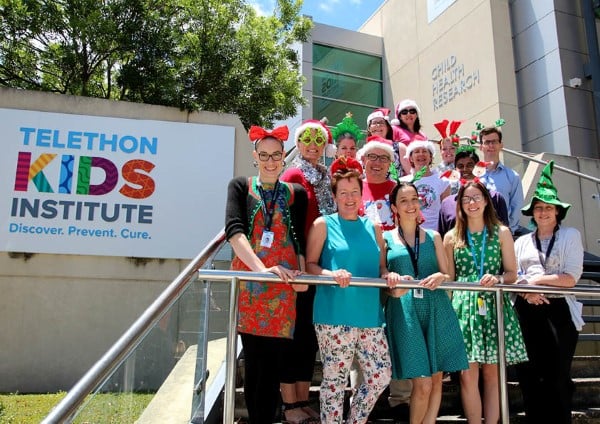Search
Showing results for "clinical trials"
Research
Respiratory Syncytial Virus Reinfections in Children in Western AustraliaRespiratory syncytial virus (RSV) reinfection in children is poorly understood. We examined the incidence, characteristics, and outcomes of hospital-attended RSV reinfections in children <16 years in Western Australia between 2012 and 2022.
Research
Predicting long term lung health outcomes in young adults born very preterm (WALHIP 19 year old follow-up)This study will conduct a detailed lung health assessment in a follow-up of a group of preterm individuals at 19 years of age.
Research
The relationship between Bordetella pertussis genotype and clinical severity in Australian children with pertussisIn children, we found no relationship between Prn status and markers of severe pertussis
Research
Nasal delivery of a commensal Pasteurellaceae species inhibits nontypeable Haemophilus influenzae colonisation and delays onset of otitis media in miceWe have demonstrated that a single dose of a closely related commensal can delay onset of NTHi otitis media in vivo
Research
Macronutrients in Human Milk and Early Childhood Growth—Is Protein the Main Driver?Infant growth trajectories reflect current health status and may predict future obesity and metabolic diseases. Human milk is tailored to support optimal infant growth. However, nutrient intake rather than milk composition more accurately predicts growth outcomes. Although the role of protein leverage in infant growth is unclear, protein intake is important for early infancy growth.
Research
Lower Cord Blood IL-17 and IL-25, but Not Other Epithelial Cell-Derived Cytokines Are Associated with Atopic Dermatitis in InfancyThere is a growing need for early biomarkers that may predict the development of atopic dermatitis (AD). As alterations in skin barrier may be a primary event in disease pathogenesis, epithelial cell (EC) cytokines expression patterns may be a potential biomarker in early life to target allergy preventive strategies towards "at-risk" infants. The aim of this longitudinal investigation was to examine from birth over the course of infancy levels of the EC cytokines: thymic stromal lymphopoietin (TSLP), interleukin (IL)-33, IL-25, and IL-17 in infants at high-risk of AD due to maternal atopy.
Research
Defining the cellular immune response to vaccines for enhanced protection from invasive pneumococcal diseasePeter Lea-Ann Ruth Richmond Kirkham Thornton MBBS MRCP(UK) FRACP PhD PhD Head, Vaccine Trials Group Co-Head, Bacterial Respiratory Infectious Disease
Research
The CASHEW Study - Introducing Cashew Nuts During InfancyDebbie Susan Palmer Prescott BSc BND PhD MBBS BMedSci PhD FRACP Head, Nutrition in Early Life Honorary Research Fellow debbie.palmer@uwa.edu.au
Research
Pathogenesis of obstructive sleep apnoeaLea-Ann Peter Ruth Kirkham Richmond Thornton PhD MBBS MRCP(UK) FRACP PhD Co-Head, Bacterial Respiratory Infectious Disease Group; Microbiology Lead,

Wrap up of the people, projects and updates from 2017 in the Vaccine Trials Group research area, and Dr Peter Richmond.
